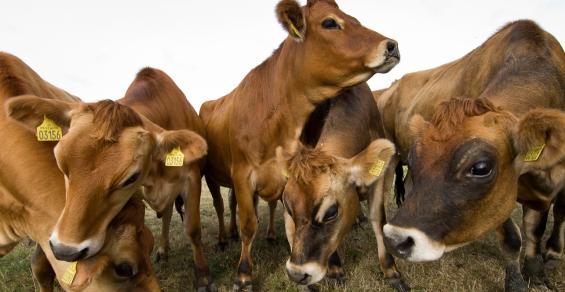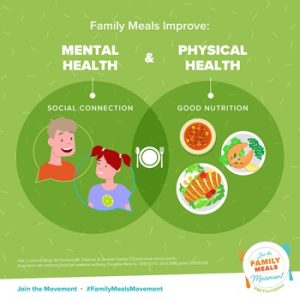Family dairy’s expansion is lured by Agropur’s need for cows.
Ensuring a market for your end product can be tough for any farmer, so a Pacific Northwest dairy family decided to bring their cows to market in South Dakota.
With established dairies in Washington and Oregon, the Bosma family was looking to expand elsewhere. The family started prospecting for potential sites near Sioux City, Iowa, where Brant Bosma attended Dordt University.
Bosma eventually walked away with a bachelor’s in business administration, as well as a new site for their Jersey dairy operation two hours away from Sioux City in Madison, S.D.
Kevin SchulzJERSEY, SURE: The family switched from Holstein cows to Jerseys due to less feed intake resulting in less manure output, as well as milk components more favorable for cheese production.
The new enterprise, Orland Ridge Dairy, moved into Madison two years ago to take advantage of an expansion by the Agropur cheese plant in Lake Norden, S.D. Completed in 2019, Agropur tripled its cheese output to 9 million pounds a day and needed more milk production.
Robotic milkers
Orland Ridge uses 24 Lely robotic milkers. Its 1,600 Jerseys are milked by three milkers per cow pen. Currently, cows spend about 7 minutes and 12 seconds “in the box,” but the aim is to get that down to 6.5 minutes.
Kevin SchulzROBOTIC TOUCH: Cows at Orland Ridge Dairy are milked by Lely robotic milkers. First ,the unit scrubs each teat on the udder clean before attaching a milking unit.
“That would allow us to add three or four more cows per robot to make it more efficient,” Bosma says. Each pen has capacity for about 200 cows, but currently Orland Ridge has 170 to 185 cows in each pen. He says another 24 robotic milkers should be in operation by fall.
Each cow has a radio frequency identification ear tag. Through the RID tag, a cow is admitted into the milking box and its production is monitored for a 24-hour period.
Cows are fed silage throughout the day, along with pelletized feedstuff while milking. Experienced cows learn they get the extra feed when they milk, so they will attempt to trick the system. However, those cows will be “kicked out” if they try to enter too often between milkings, or if they’ve already fulfilled their expected daily milk production.
“We want these girls to get milked often,” Bosma says, “but we want healthy milkings. We don’t want them going in there 20 times a day, because that’s hard on them. We want them to be full when they come in.”
The RFID tags also provide data on a cow’s health, time spent eating and other habits, such as rumination minutes — “how much time they spend lying down, ruminating,” Bosma says.
The information also can tell when a cow is in heat. “When she’s in heat, she’s going to stop eating; she’s going to be running around a lot,” he says. Spikes such as that will tell the computer to put that cow on a “heat list,” so the next time she enters for milking, she will be routed for further observation.
Likewise, if a cow spends too much time lying around, the computer will alert barn staff to check that cow for abscesses or lameness.
The data allows for monitoring cows without physically handling them. Bosma says the crew strives to have as little contact as possible, only handling when absolutely necessary.
Cow comfort
The cows are housed in a cross-ventilated barn, with curtains and fans automatically controlled to maintain a comfortable environment for the cows yearlong.
Keeping cows cool during a hot and humid South Dakota summer is just as important as keeping them warm during harsh winters. Bosma says it’s also necessary to keep the barns at 32 degrees F to ensure the robotic milkers will continue to operate.
On a warm day, curtains are left wide open and the fans run at full speed. Baffles over the cows help with airflow, pushing “air down over the cows’ backs as they’re lying in the beds,” he says.
Labor squeeze
Though Agropur’s expansion lured Bosma’s family to look at expanding its dairy from the West Coast to South Dakota, Bosma says other aspects of the move, such as finding labor, have been equally satisfying.
“We brought two or three people with us from Washington because we weren’t sure just how much labor we’d be able to find here,” he says, adding that the rest of the dairy’s staff was hired from the Madison area. “They were already living there and had housing, so it’s worked out really great.”
Orland Ridge now employs 11, including Bosma, to oversee the 1,600 cows that produce about 90,000 pounds of milk each day. He foresees having to hire a couple more employees once the new robotic milkers are added to the lineup.
Despite the success Bosma had in staffing his dairy, he admits finding labor can be tough, and the current situation is a reason for the robotic milkers.
“If we would have built 10 years ago, I probably wouldn’t have robotic [milkers]. But because of when we built, robots made the most sense to us,” he says. “It’s hard to find people to do this kind of work and so the robots are here every day. We take care of them to take care of us.”




